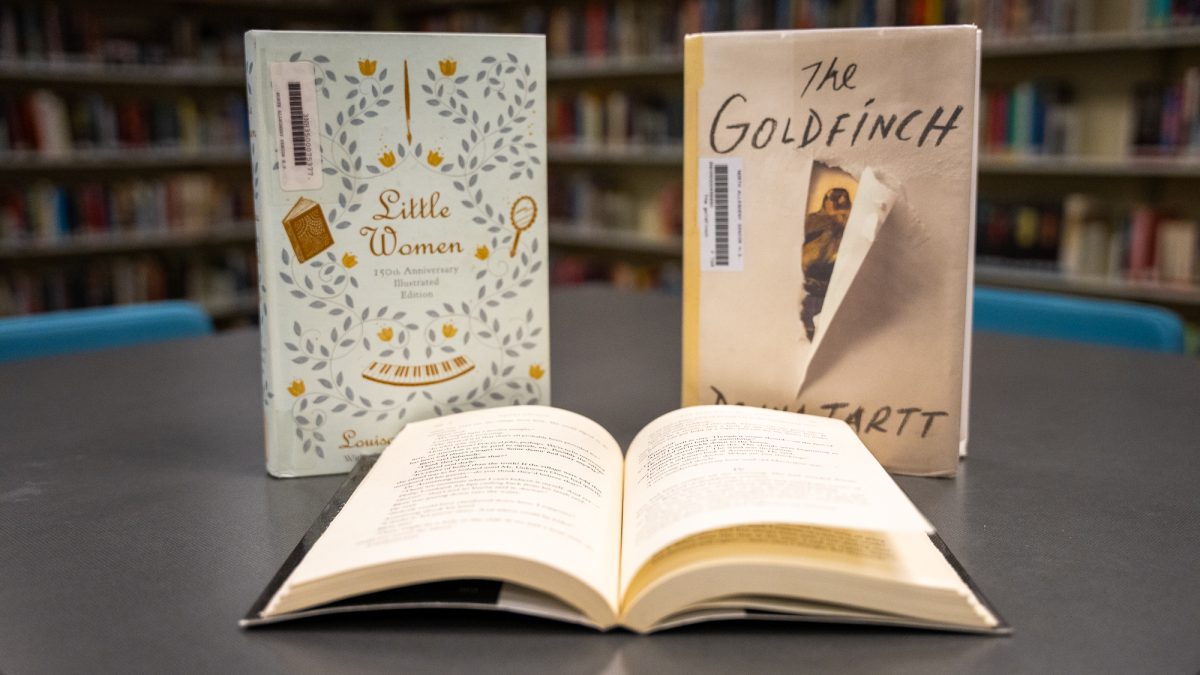Little Women – Louisa May Alcott
A classic that would probably smell like dried oranges and cinnamon if it were made into a candle. If for some reason you haven’t gotten around to reading it yet, Little Women follows the lives of the four pleasant March girls, sisters marked by their sweet devotion to those they love and their fiery ambitions. It is widely believed that the March sisters were inspired by the upbringing and early adulthood years of Alcott herself, adding even more depth to the uniquely spirited women. If you have already walked through the vibrant world of the March family, it shouldn’t take much for you to consider another reread. Its charming storyline and neat settings make Little Women the perfect read for a peaceful autumn.
I love Little Women for its enamoring warmness, complemented by the devastating moments of sorrow and frustration. The novel’s simplicity is a great part of its charm, yet the characters remain (sometimes painfully) human and complicated. Revisits to the March girls are never dull, and there is always another colorful detail to uncover in each and every reread.
******
Tartt’s novels are well known for their tantalizingly vivid descriptions and iconically complex characters, and Theodore Decker of The Goldfinch is certainly no exception. This perplexing novel shows the rapidity of change and explores the deepest caverns of human responses to it, making it an appropriate read for the transitional season of fall. The novel follows the life of a preteen boy who loses his mother in an unexpected museum explosion, leaving him with nothing but a stolen Fabritius painting. Theo finds himself much like the small goldfinch in his illegally acquired painting, inherently beautiful yet inescapably limited. In an indescribably immersive series of day-to-day life descriptions, readers watch how this extraordinary loss and odd small gain mold a young Theodore into a deeply haunted man. Tartt’s imagery calls to mind the brighter colors and then sudden monotony and coldness of fall, leaving an imprint on the minds of dazzled readers.
The Goldfinch is a novel I have never quite been able to stop thinking about. Donna Tartt’s writing brings Theodore Decker to life everywhere, in each place impermanent beauty can be found. It is hard to find books that are so memorable, haunting, and enrapturing even when they are only thought about.
*This novel contains mature themes that may not be appropriate for some readers.
******
The Murder of Roger Ackroyd – Agatha Christie
The Murder of Roger Ackroyd is a mystery novel for the dreary fall evenings, best lit by a rainy window. In a fashion that only Christie could pull off, the death of Roger Ackroyd is at first wholly uninteresting, a matter of only the mildest concern. The novel’s narrator guides the reader through life in the close-knit village of King’s Abbot as Ackroyd’s departure grows increasingly peculiar, lulling them into the security of boredom before breaking it with a suddenness I never anticipated. Despite its apparent initial dullness, this novel’s ending will make anyone wonder how they ever missed the clues, whether they were stealthily stashed within shadows or openly out in the light. The Murder of Roger Ackroyd has undoubtedly influenced thousands of chilling stories through Christie’s expert depiction of the carefully woven tale, a novel that is truly unmatched when it comes to more dismal, haunting reads.
Christie’s books always hold value in rereads, but The Murder of Roger Ackroyd’s ending makes it impossible to only read through once. It gives great meaning to the phrase “hidden in plain sight”–and makes you doubt everything you thought you knew about the blissfully simple and small village Ackroyd himself once dwelled in. Its twist achieves a level of casual terror that only Christie could perfect and present in such a short, unpretentious novel.



